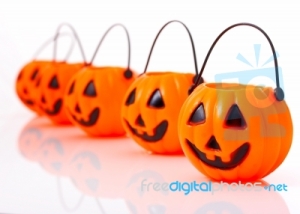Have fun on Halloween or at your Halloween party. Dress in a low cost costume!
Consider some of these ideas:
Use a black make-up pencil and draw cat whiskers and a black cat nose.

Pin socks on an all white outfit and goes as dryer lint
Halloween makeup can be purchased at most stores like Target, Walmart and drug stores. Use the makeup to look like a scary creature dressed in black. 
Read on for more great ideas from http://www.essortment.com/halloween-costume-ideas-50-funny-ideas-52248.html
Looking for a cheap, easy, fast, funny costume this Halloween? Try one of these ideas, sure to be a hit when trick-or-treating or at parties.
1) Dress up as you normally do. If someone asks what you are, tell them you’re a werewolf. If they ask why you have no hair or fangs, explain that it’s not a full moon.
2) Get a bag of white balloons and a box. Put the box over your head and cut out holes for your arms. Paint the box a bright color and the word “soap” across it. Then tape the bubbles to the top of the box around your shoulders and head.
3) Tape a bunch of green or purple balloons all over yourself (wear green or brown clothing underneath). Go as a bunch of grapes.
4) Wear brown clothes. Get a package of fall silk leaves for decorating (you can get 50 in a pack for about a dollar at craft stores). Tape them all over your arms and on a hat. Get a stuffed bird and perch it on your head. Go as a tree.
5) Wrap yourself in a roll of orange felt. Cut armholes and put an orange ski cap on your head. Go as a carrot stick.
6) Safety-pin a bunch of cheap watches and costume jewelry on the inside of your coat. Go as a con man.
7) Get a large box and paint it white, green or tan. Make a hole at the top for your head and armholes. Glue on some magnets and some post-it notes with shopping lists and phone numbers. Go as a refrigerator.
8) Get a roll of orange yarn and a few bags of roasted pumpkin seeds. Glue them all over a cheap orange sweat suit. Go as pumpkin guts.
9) Wear a t-shirt displaying your favorite brand of soda. Get a foil pie plate, punch two holes in it at either end, and run string through it. Put it on your head like a hat and tie it. You’re a bottle of your favorite drink.
10) Glue some (clean) garbage all over a sweat suit. Go as a trash heap.
11) Throw a white sheet over your head, and cut a hole for your head to come through. Wear a yellow hat and paint your face yellow with make up. Go as a fried egg.
12) Get a poster board, make up a funny advertisement and paint it on. Hang it around your neck and go as a billboard.
13) Put on your rattiest clothes and get a toy shopping cart. Fill it with junk. Go as a shopping cart/bag lady.
14) Dress like a mailman. Get a stuffed dog and sew it’s mouth to your pant leg.
15) Get an gorilla costume. Get one of those headbands with the springs on it, but remove the silver balls from the end and glue on tiny toy air planes. Carry a little Barbie doll in an evening gown and you’re King Kong.
16) Get a large box. Cut a hole for your head and arms. Wrap it with gift wrapping paper and put a big bow on your head. Make a large gift tag out of construction paper that says, “To: Women, From: God.” This year, you can honestly say you’re God’s gift to women.
17) Wear all black and a pair of dark sunglasses, or glasses with a rubber nose. Get a strip of fabric you can fashion into a sash (like a beauty queens) and use fabric paint markers to write, “Bless you,” across it. You’re a blessing in disguise.
18) Get a box and paint it white. Make holes for your head and arms. Paint or draw black spots on it and go as a die. If you have a partner, make two and go as a pair of dice.
19) Get an old black sweat suit. Get yellow fabric paint and paint a double-line down the middle, vertically, front and back. Glue some tiny toy cars up and down your front and back and go as a highway.
20) Get a clear plastic bag, and a bag of assorted colored balloons. Step into the bag and make leg holes and arm holes. Fill it with balloons half-blown up, while you’re still in it. Tie it off at the neck. Get a piece of paper as a label and write,”Jellybeans” across the front. You’re a bag of jellybeans.
21) Get a bunch of Barbie dolls and a black sweat suit. Attach the dolls randomly all over the sweat suit. You’re a babe magnet.
22) Get a medium sized box. Cut a hole at the bottom for your head, and a large, square opening in the front. Put pipe cleaners as antennas and glue soda bottle caps on as knobs. Put it over your head and wear all black. You’re a TV announcer.
23) Wear a black sweat suit and randomly attach single socks all over your clothes. You’re the sock thief from the drier.
24) Get some yellow yarn and brown pom-poms. Glue them all over an old sweat suit. Put an old colander over your head as a hat. Go as spaghetti and meat balls.
25) Wear a clown costume top and paint your face. Get a large box and paint it a bright color. Make a hole for your waist and put it on as if the bottom of a skirt. Go as a jack-in-the-box.
26) Glue a bunch of newspapers to old clothes. Go as paper mache in progress.
27) Get a bunch of small, single-serving sized cereal boxes. Glue them all over some old clothes and bring a big, rubber knife. Go as a cereal killer.
28) Get a box, cut arm holes and a hole for your head. Wrap it in pretty patterned gift paper. Stick a bunch of tissues coming out of the neck, and put on a hat covered with tissues glued all over it. Go as a box of tissues.
29) If you’re very pregnant, paint your belly with orange face paint and draw a pumpkin face on the front. Wear a shirt that opens in front and just fasten it above the belly so the pumpkin protrudes. When you put your arms down around your belly, you’ll look like you’re carrying a jack-o-lantern.
30) Paint your car or bicycle tires with black paint. Lay old clothes front-down on the street and drive over them. Let them dry, put them on and go as road kill.
31) Tie a sneaker to the top of your head, wear all pink and paint your face pink. Go as a piece of gum.
32) Get two large pieces of foam and strap them to your shoulders so one hangs in front, the other in back. Stuff some lettuce leaves coming out of them (or green felt), and on the underside of one glue a big, round, red or brown piece of felt that sticks out of the sides. Go as a sandwich.
33) Get a round piece of cardboard and cut a hole in the center of it. Get a large foil tray and cut a hole in it, as well as a table cloth with a hole in it. Put the cardboard over your head, then the table cloth so it hangs over your body, then the tray. Place lettuce leaves coming out from around the neck hole. You’re a head on a platter.
34) Wear a raggedy old pair of shorts and t-shirt, and go unshaven if your a man. Mess your hair up. Get a garden tiki torch from the party supply store. Go as a recent loser from Survivor.
35) Dress as a dog and put a cardboard cone around your neck to keep you from scratching for fleas.
36) .
37) Glue cotton all over a light blue outfit and carry a water gun to squirt people. You’re a rain cloud.
38) Get a pair of angle wings and put them on your back, dressed in your pajamas, fuzzy slippers and bathrobe. Carry around a coffee cup. Your the “Angel Of The Morning.”
39) Cut out a cardboard shape like a surf board and cover it with fake spider webs. You’re a web surfer.
40) Dress in a business suit and carry around a big jar filled half way up with thumb tacks. Go as the “tacks collector.”
41) Get a devil costume and throw over it the ugliest thrift-store blue dress you can find. Be the, “Devil In A Blue Dress.”
42) Tape a bunch of white colored balloons to a a skin-colored body suit. Wear a shower cap and carry a scrub brush.
43) Wrap your body in aluminum foil and top your head with a beret. You’re a french kiss.
44) Get a rubber pig’s nose and wrap yourself in a blanket. Go as a pig in a blanket.
45) Make a green pumpkin shape out of felt and hang it over yourself. Paint a face on it. Go as Jack O’ Lantern.
46) Get a bag of moss from the craft store’s floral isle. Glue it all over some old clothes and hat and go as a chia pet.
47) Pin underwear to your torso and go as a chest of drawers.
48) Dress like a cat; carry a black bag stuffed with fake jewels overflowing. You’re a cat burglar.
49)Attach gum wrappers, small pieces of pink clay to represent gum, soda cups and popcorn bags and a few kernels of popcorn to a black sweat suit, and go as a theater floor.
Plaster yourself with name tags, using a different name on each, and go as a someone having an identity crisis.





